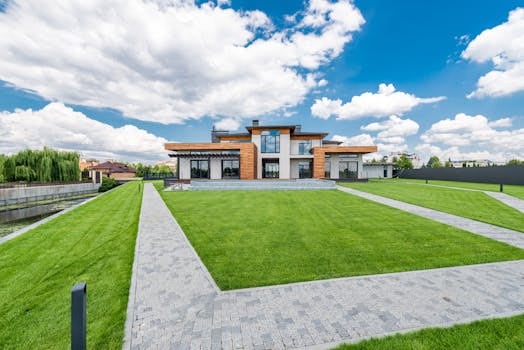Wellness-Certified Homes: The Next Big Thing in Real Estate
Welcome to the future of real estate – wellness-certified homes. As more and more people are becoming health-conscious, the demand for sustainable and healthy living spaces is on the rise. Gone are the days when buyers were only looking for a beautifully designed house. Today, they want a home that supports their physical, mental, and emotional well-being. In this day and age, wellness-certified homes are the next big thing in the real estate market. Let’s dive into what these homes are and why they are gaining popularity among homebuyers.
The Concept of Wellness-Certified Homes
We all know that we spend a significant amount of time indoors, whether it is at home, work, or school. According to the Environmental Protection Agency, Americans spend about 90% of their time indoors. With that being said, the quality of indoor air and the overall environment plays a crucial role in our health and well-being. And this is where wellness-certified homes come into the picture.
In simple terms, wellness-certified homes are houses that are built with the health and well-being of its occupants in mind. These homes go beyond just being environmentally friendly and focus on providing a space that promotes physical, mental, and emotional wellness. A comprehensive certification process is followed to ensure that these homes meet specific standards and criteria.
Features of Wellness-Certified Homes
The primary goal of wellness-certified homes is to provide a healthy living environment for its occupants. Here are some of the common features that these homes offer:
1. Indoor Air Quality
Indoor air quality has a significant impact on our health. Wellness-certified homes use materials and products that do not emit harmful toxins and pollutants, ensuring that the indoor air is free of contaminants. These homes are also equipped with proper ventilation systems to circulate fresh air throughout the house.
2. Natural Lighting
Exposure to natural light has been proven to have numerous benefits, including boosting mood, improving sleep, and enhancing productivity. Wellness-certified homes are designed to maximize natural light, reducing the need for artificial lighting during daylight hours.
3. Non-Toxic Materials
From paints and flooring to furniture and appliances, everything used in wellness-certified homes is carefully chosen to be non-toxic and eco-friendly. This ensures that the indoor environment is free of harmful chemical substances that can cause health issues.
4. Noise Control
Excessive noise can have negative effects on our health, including stress and anxiety. Wellness-certified homes are designed with proper insulation and soundproofing techniques to minimize external noise and promote peace and quiet inside the house.
5. Access to Nature
Being in contact with nature has shown to have calming and healing effects on our mind and body. Wellness-certified homes incorporate green spaces and natural elements, such as plants and water features, to create a connection with nature.
The Benefits of Living in a Wellness-Certified Home
Wellness-certified homes offer a range of benefits for its occupants, both in the short and long term. Some of these benefits include:
1. Improved Health
With a focus on indoor air quality, natural lighting, and non-toxic materials, wellness-certified homes provide a healthier living space for its occupants. This can lead to improved respiratory health, better sleep, and a reduced risk of allergies and other health issues.
2. Increased Productivity
A healthy living environment can lead to increased productivity and creativity. With access to natural light and a peaceful atmosphere, occupants of wellness-certified homes may experience better concentration and focus, making it an ideal space for remote workers.
3. Long-Term Savings
While the initial cost of a wellness-certified home may be higher than a traditional home, the long-term savings can be significant. With energy-efficient features and materials, these homes can result in lower utility bills and maintenance costs in the long run.
The Impact of Wellness-Certified Homes on the Real Estate Market
The growing trend of wellness-certified homes indicates that there is a significant demand for such properties. In fact, a survey conducted by the Global Wellness Institute revealed that wellness real estate was a $134 billion industry in 2017 and is expected to reach $198 billion by 2022.
As more and more people are prioritizing their health and well-being, it is not surprising that they are willing to pay a premium for a home that supports their lifestyle. This has led to an increase in the number of wellness-certified homes being built, providing more options for buyers in the real estate market.
Conclusion
In a world where our daily lives are becoming increasingly hectic and stressful, it is crucial to have a home that promotes our health and well-being. Wellness-certified homes offer a unique solution to this by providing a living space that is conducive to a healthier and happier life. As this concept gains more traction, it is safe to say that wellness-certified homes are indeed the next big thing in the real estate industry.










